With the rollout of Google Analytics 4 (GA4), many people have grappled with its increased complexity.
With privacy considerations also on the table, this shift has left a considerable gap for alternatives that prioritize both user-friendliness and privacy to take root.
Plausible is definitely a strong contender worthy of consideration. It offers a lightweight, privacy-centric solution that works with WordPress and doesn’t require super tech skills to set up and use.
Unlike GA4, which has complicated the analytics process considerably, Plausible provides a straightforward, accessible platform that ensures compliance with modern data protection regulations and focuses on the essential metrics without being overwhelming.
But enough hype. Let’s look at the reasons why Plausible is an analytics option that is well worth considering.
Why Plausible is a strong alternative to GA4
First things first, let’s look at the features Plausible offers and why they outshine what GA4 offers.

Privacy and data
Plausible Analytics stands out primarily for its strong stance on privacy. It does not use cookies, which means it inherently respects visitor privacy by not collecting or storing personal data.
This cookieless approach ensures compliance with stringent privacy laws such as GDPR, CCPA, and PECR, making it a hassle-free choice for website analytics.
Plausible’s data handling practices also mean you don’t need to include cookie consent banners, simplifying compliance efforts and enhancing user experience.
Simplicity and user-friendliness
Plausible’s design philosophy prioritizes simplicity and clarity, offering a dashboard that is intuitive and easy to navigate.
This contrasts sharply with GA4’s complexity. Plausible focuses on essential metrics, avoiding the bloat that characterizes many other analytics platforms. This makes it particularly suitable for those who need straightforward insights without extensive configuration or setup.
Other noteworthy features
You’ll also be pleased to hear that Plausible offers a real-time dashboard and allows the tracking of conversion goals, revenue, and campaign effectiveness using UTM parameters.
It also supports custom events and dimensions.
These features are well-suited to businesses that need detailed and actionable analytics but want to maintain a minimal digital footprint.
Also of note? Plausible uses a super tiny script—they purport it to be 45 times smaller than GA4. This means much faster website load times and no risk of potential bog down that happens with other analytics scripts.
Pricing
Pricing for Plausible is transparent and scalable, starting at $9/month ($90/year) for up to 10,000 pageviews and increasing based on the number of pageviews. This model benefits businesses of all sizes, from individual bloggers to large enterprises.
Plausible Analytics offers three main pricing plans designed to accommodate a variety of needs:
- Growth. This plan supports up to 10 websites and three team members and is suitable for smaller teams and websites. It includes features like email and Slack reports, Google Analytics import, and three years of data retention.
- Business. Geared towards larger teams and more extensive website portfolios, this plan allows up to 50 websites and 10 team members. It expands on the Growth features with access to a Stats API, ecommerce revenue attribution, and five years of data retention.
- Enterprise. This custom plan is tailored for very large organizations or those with specific needs that exceed the offerings of the Business plan. It includes all features of the previous plans plus enhanced API access, more team members and sites, and technical onboarding support.
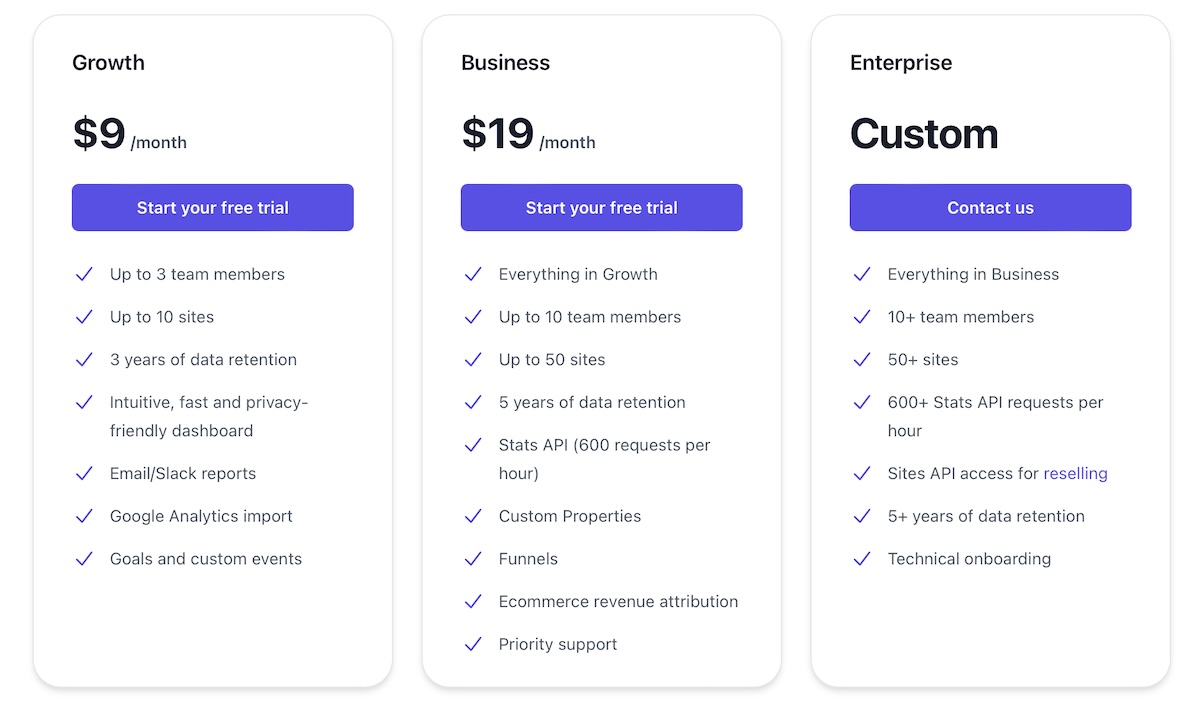
Overall, Plausible offers compelling package options for those looking to switch from GA4, especially for anyone who prioritizes privacy, ease of use, and straightforward pricing.
How to set up Plausible on your WordPress site
Installing Plausible Analytics on your WordPress site is straightforward, and configuring it to track advanced metrics like ecommerce revenue, file downloads, and 404 errors is equally streamlined.
Here’s a mini-guide to get you started:
Install the plugin
Log into your WordPress dashboard and go to Plugins > Add New Plugin, and search for “Plausible Analytics.” Click Install Now and then Activate to activate the plugin.
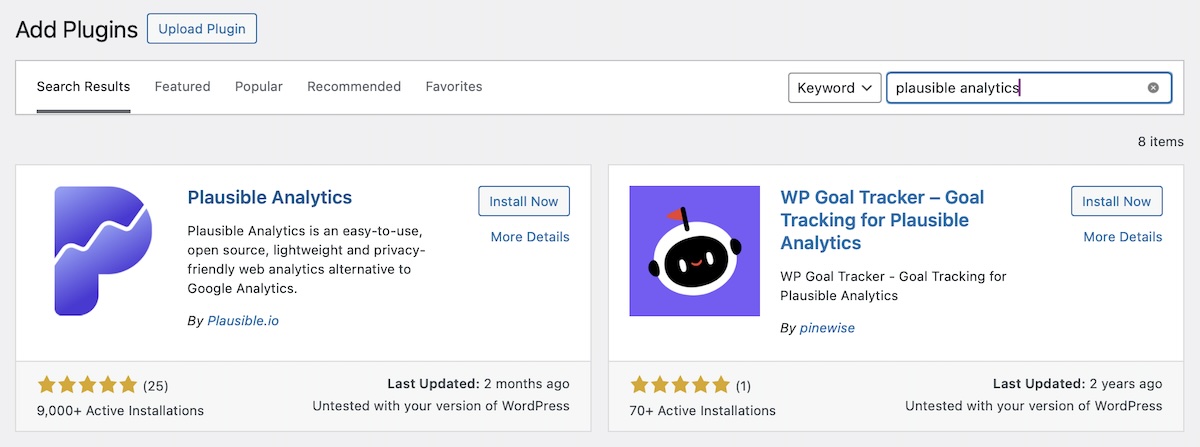
Configure the plugin
Once activated, you’ll find Plausible Analytics under the Settings tab. Here, you can configure various settings to tailor the analytics to your site’s needs.
You’ll first see the Getting Started Guide, which walks you through the setup process.
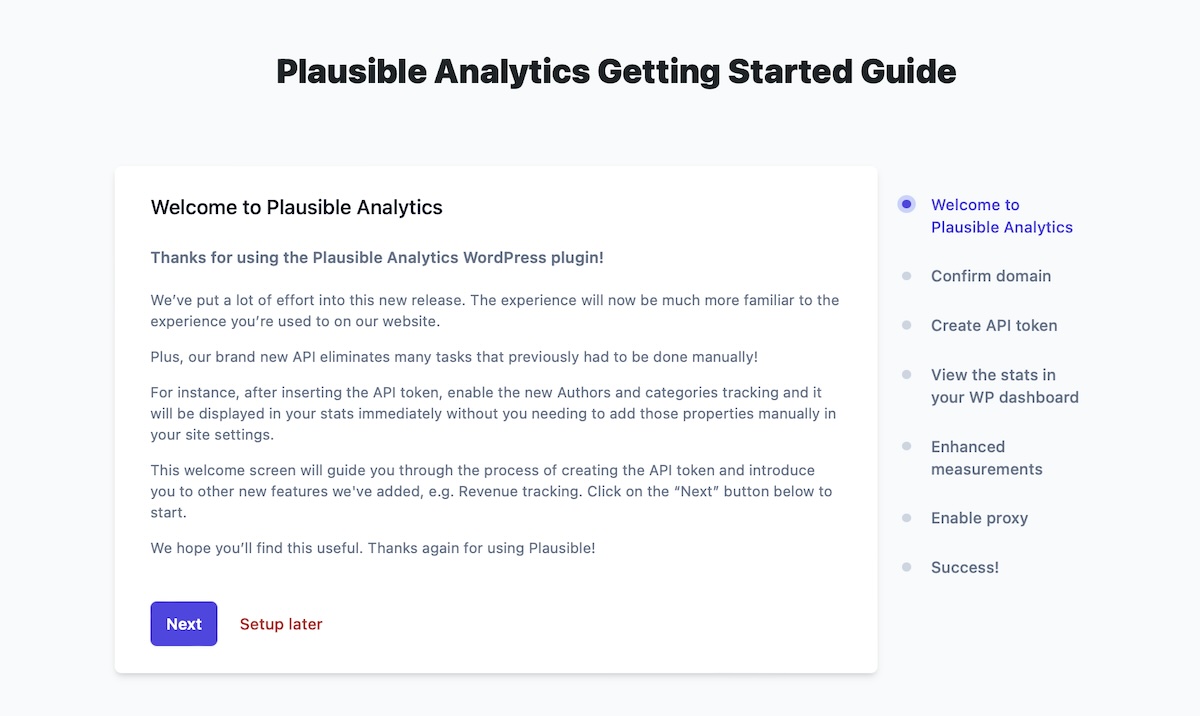
Click Next, and then confirm your domain name. If everything looks good, click Next.
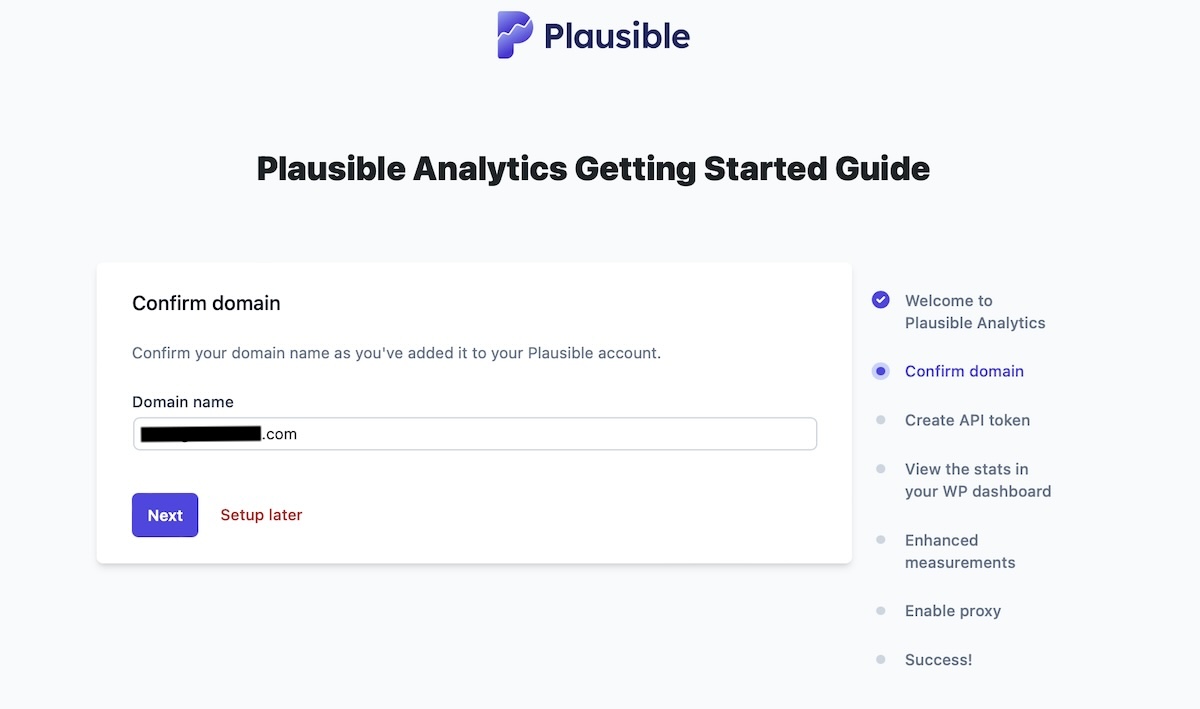
Next, you’ll need to create an API token and then paste it into the appropriate field. To do this, click the link that says Create an API token.
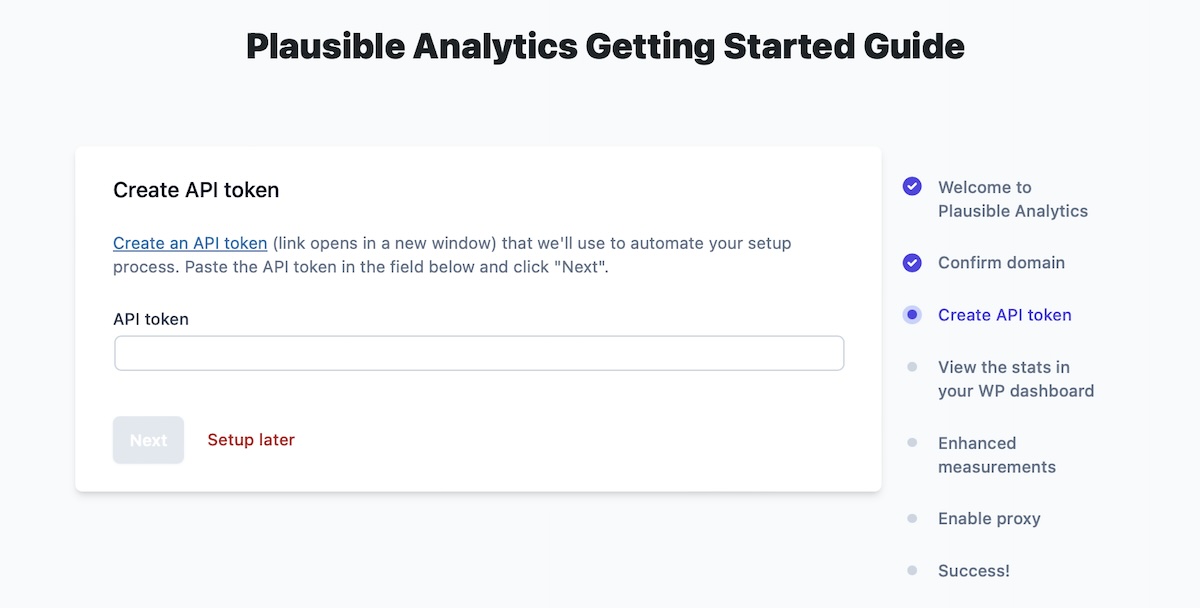
This will open a new window where you’ll be prompted to input your Plausible-associated email address and password. If you haven’t created an account yet, now is the time to do so.
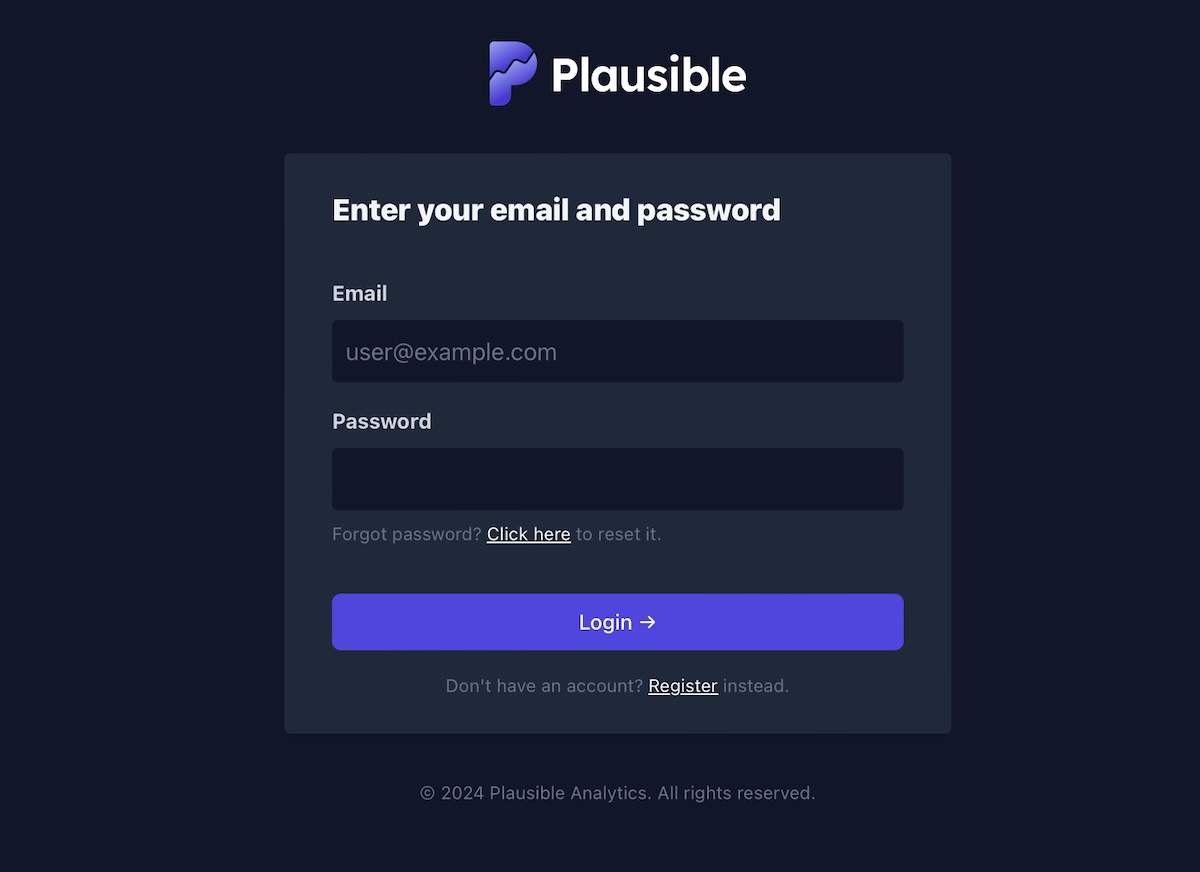
Once you sign up for Plausible, you can get your API token. Paste this back into the appropriate field in WordPress. Click Connect.
Once the process is complete, you should see the button change to Connected.
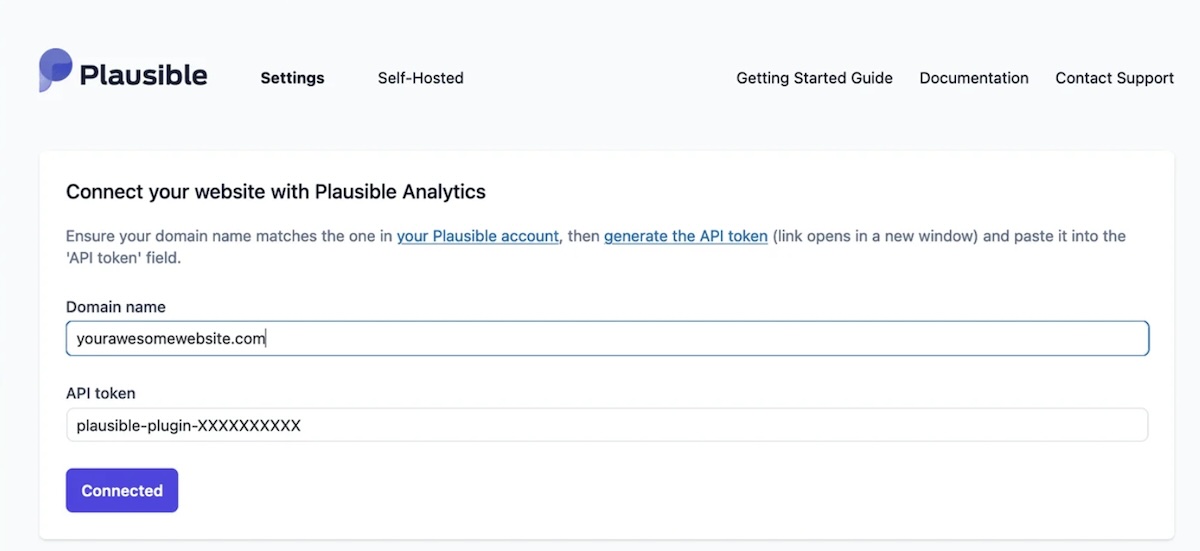
That’s the basic setup completed!
Configuring enhanced measurements in Plausible
Setting up enhanced measurements with the Plausible Analytics WordPress plugin allows you to gain deeper insights into how users interact with your website.
Here’s a breakdown of each measurement, how to set them up, and what you should know:
404 error pages
Enable this feature in the plugin settings to track visits to non-existing pages. Just toggle on the option.
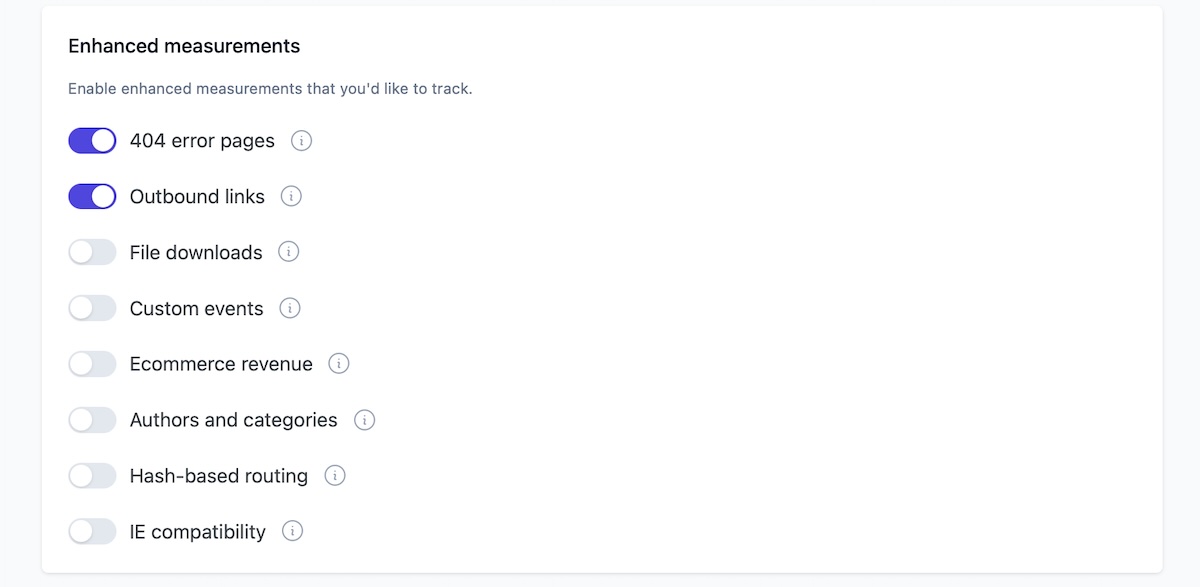
This helps you identify and rectify broken links or missing content, improving user experience and SEO.
Outbound links
Use this option to track clicks on external links to understand which outbound links capture your audience’s interest. This can be particularly useful for assessing the effectiveness of affiliate links or external partnerships.
File downloads
Enabling this measurement allows you to track when users download files from your site, such as PDFs, DOCXs, or media files. This helps you understand which resources are most valuable to your audience.
Custom events
Set up custom events to track interactions like button clicks or form submissions. This is done by tagging HTML elements with specific CSS classes directly in your WordPress editor.
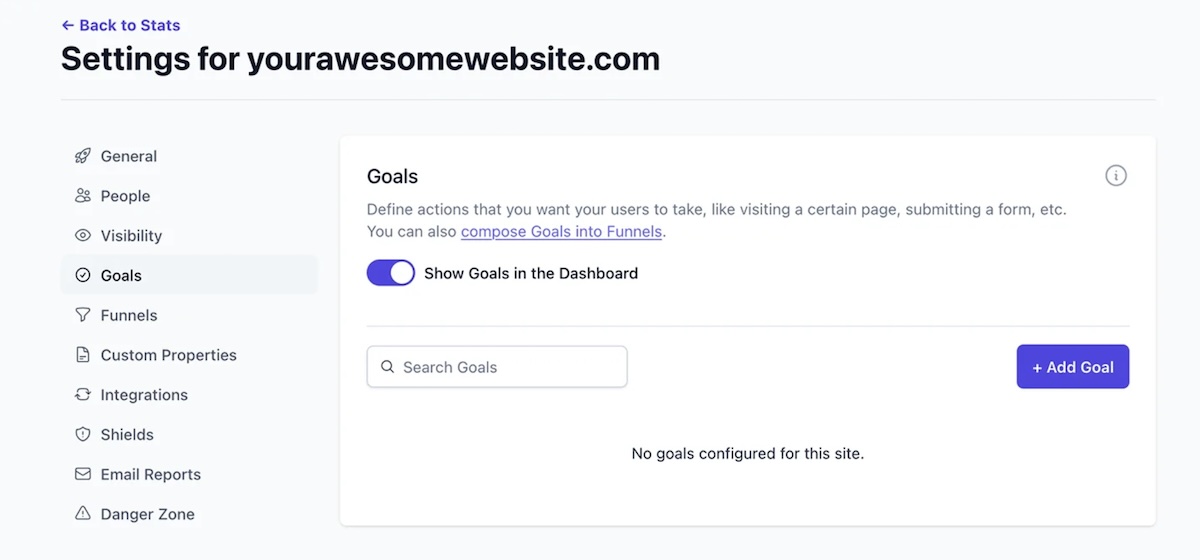
Specifically, you’d create custom event goals in your Plausible account and then reference them in the appropriate places on your site.
Ecommerce revenue
If your site includes ecommerce elements, this feature allows you to track revenue by assigning monetary values to custom events. You can also track conversions and assess the effectiveness of your marketing efforts.
You can use these custom events to track ecommerce transactions. In the WordPress editor, you can tag elements like purchase buttons with specific CSS class names that Plausible will recognize and track as custom events.
For example, you might add a class like plausible-event-name=Purchase for a purchase button.
Authors and categories
This measurement sends information about post authors and categories along with page views or events. You can use this to track which authors or content types perform best.
Hash-based routing
Enabling this feature ensures that interactions with URL fragments (like #contact) are tracked for websites using hash-based URLs, providing a clearer picture of how users navigate your site.
IE compatibility
Finally, enable this mode to accommodate visitors using Internet Explorer. It adapts the tracking code to be compatible with older browser technologies, ensuring comprehensive data collection.
Exploring the enhanced web analytics available in Plausible
With Plausible installed and configured, you can begin to enjoy the benefits this integration allows. You can use it to view and analyze web traffic data directly within your dashboard.
Viewing and analyzing web traffic data
Once installed, Plausible makes its analytics available directly in the WordPress dashboard. Site administrators, by default, have access to these statistics, but permissions can be adjusted to allow other roles, such as editors and authors, to view the dashboard as well.
To ensure the analytics are viewable, go to Settings > Plausible Analytics and toggle the View stats in WordPress button.

Then, to set which user roles have access to analytics, scroll to Show stats dashboard to additional user roles and select which user roles should have access to analytics.
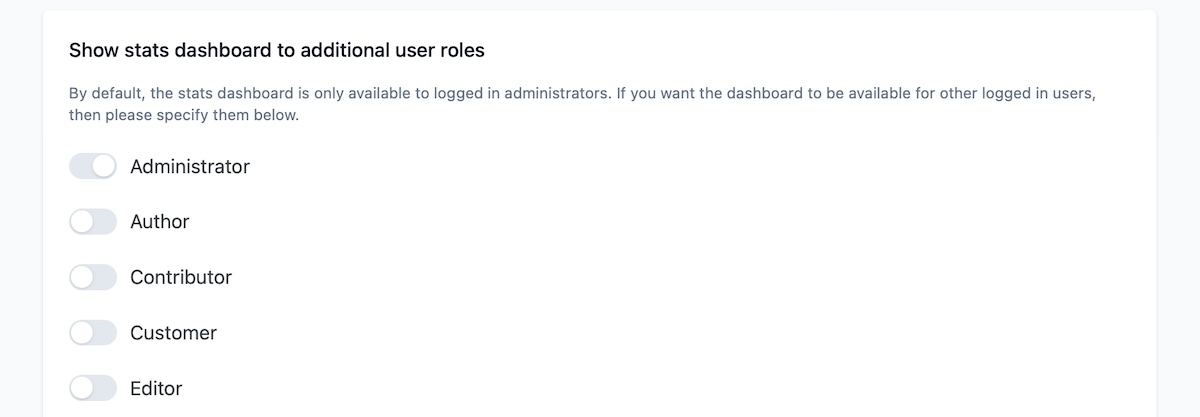
You can also adjust if visits by people with certain user roles are tracked. Scroll down to the section that says Track analytics for user roles. Toggle on (or off) permission for each user role as you see fit.

Integrating with Google Search Console
Plausible can be integrated with Google Search Console. This lets you view and analyze the search queries that lead visitors to your site. This integration provides deeper insights into your SEO performance and the overall effectiveness of your content in search.
Setting up traffic spike notifications
Another feature worth mentioning is that you can set up notifications for traffic spikes via email or Slack. This feature is particularly useful for keeping tabs on sudden increases in traffic. This gives you a heads-up and allows you to react quickly to potential viral content or unexpected interest in your site.
How to transfer data from GA4 to Plausible
Transferring your historical data from GA4 to Plausible involves a few steps to ensure a smooth transition. Here’s a general guide on how to import your data from GA4 to Plausible:
Access Plausible site settings
Log into your Plausible Analytics account and go to the site settings for the website for which you want to import data.
Initiate the import process
In the site settings, look for the Imports section. Here, you will find an Import Data panel where you can begin the process by linking your Google account to Plausible. This is necessary as it allows Plausible to access your GA4 data.
Select the Google Analytics property
Once your Google account is linked, you’ll see a list of all Google Analytics properties associated with that account. Select the GA4 property you want to import from the dropdown menu.
Confirm the import
After selecting the property, proceed by confirming the import. To do this, click Confirm import. This will start the data transfer process, which can take a few minutes to a couple of hours, depending on the volume of historical data.
Completion and integration
You will receive an email notification once the import is complete. Afterward, the imported data will appear in your Plausible dashboard and be integrated with any existing data.
It’s important to note that Plausible imports aggregate data to ensure there is no double-counting of visitors, especially if you’re transitioning from using GA4 alongside another service.
It’s also possible to import multiple Google Analytics properties into a single Plausible dashboard but keep in mind the limit of five properties to avoid data overlap and confusion.
Is Plausible Analytics your privacy-centric GA4 substitute?
Throughout this article, we’ve explored Plausible’s compelling features, specifically its ability to serve as a robust alternative to GA4. We’ve also explored how well it works with WordPress, its simplicity of setup, and its enhanced analytics capabilities.
Plausible stands out for its simplicity, privacy focus, and commitment to providing a user-friendly analytics platform. For WordPress users, especially those hosted on a speedy platform like Kinsta, Plausible offers a lightweight and efficient solution to understand and grow their online presence without slowing down their site or compromising user privacy.
Speaking of speedy hosts, if you’re looking for a hosting provider that complements Plausible’s speed and security, consider Kinsta’s premium WordPress hosting solutions. With a focus on performance and support, Kinsta ensures that your site runs smoothly, whether you run a small business or enterprise.



Leave a Reply